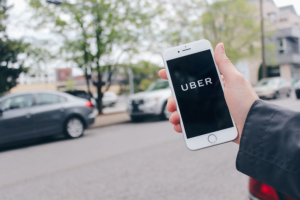8 Cyber Security Tips You Can Start Today to Keep Yourself Safe
These days, it seems like there is one data breach after another, and each time, they are being done by those who want to steal your identity. Thankfully, it is much easier than you probably think to keep your info safe. Here are some tips that you can start doing right now to put yourself in a position to fight this:

Take a Look at Your Accounts
Almost any account allows you to check the recent activity. Even Facebook, Google, and Twitter have this available. When you take a look at this, you can see every log in and authorization. If something looks strange, such as a log in from Nigeria, odds are good that you have been compromised. Most of these sites allow you to log out of every location, so you should definitely do that.
Take a Look at Your Computer
You may not realize it, but at any time, there are a number of programs running on your computer. However, some of these might not be safe. So, it is always a smart idea to check to see what is running in the background. To do this, you can check Activity Monitor for Mac or Task Manager for Windows. If you don’t know what a program is, look on Google. It will tell you if it is good or bad. If it is not good, figure out how to uninstall or remove it.
Take a Look at Your Passwords
Also, take a close look at your passwords. Do you think they are really safe? Every account should have its own password, and if you use the same passwords for more than one account, your chances of getting hacked rise exponentially. You also need to make sure you are changing your account passwords on a regular basis. You can use our FREE Email Checker and check your email address and passwords.
When you do this, you can check to see if your account has been compromised. If so, change your password immediately. You should also consider using a password manager.
Take a Look at Your Wi-Fi Connection
Are you paying attention to your Wi-Fi connection? Do you have a password protecting it? Do you have a WPA encryption? Do you have anyone piggybacking on your connection? You can install a program like Wireless Network Watcher. It is also very important that you are cautious when on public Wi-Fi. Only use a VPN, virtual private network, when connecting to public Wi-Fi.
Take a Look at Connected Apps
You also may not realize that you have given your social media accounts permission to connect to other apps. Though this isn’t extremely dangerous, they can result in account takeovers and data leaks. So, if you don’t use a specific app or service any longer, you should sever the connection.
Take a Look at Installed Apps
When you look at those connected apps, also take a look at what apps you have installed on your computer and your mobile device. You may have downloaded some type of malicious program that looks like a tool or game, but it could end up wrecking your system. If you have any weird apps, check Google to see if there were any vulnerabilities or flaws.
Update Everything
You also want to make sure you are updating your apps and OS regularly. These updates often contain security improvements in order to keep your devices safe. The newer the update, the safer your device. Also, don’t forget to check for updates on your browsers, routers, and even printers, as these can be manipulated, too.
Protect Your Identity
Finally, do everything you can to protect your identity. There are two ways to do this, especially when it comes to stopping someone from opening new lines of credit in your name. You should set up a credit freeze through every credit bureau. You should additionally set up an account that offers identity theft protection. This helps to watch your data, and it monitors your credit reports. If something goes wrong, when you have this type of protection, there are people standing by to fix things, and by doing this, you can minimize the damage that could occur.
Written by Robert Siciliano, CEO of Credit Parent, Head of Training & Security Awareness Expert at Protect Now, #1 Best Selling Amazon author, Media Personality & Architect of CSI Protection Certification.

 If you are injured or lost, it is imperative that you know how to survive in the woods. Most people don’t understand that even though you should be waiting to be rescued, you have to keep yourself alive, too.
If you are injured or lost, it is imperative that you know how to survive in the woods. Most people don’t understand that even though you should be waiting to be rescued, you have to keep yourself alive, too. These crooks violate their trust and take advantage of their ignorance of the online world. People over 50 also tend to have more money and savings including retirement funds.
These crooks violate their trust and take advantage of their ignorance of the online world. People over 50 also tend to have more money and savings including retirement funds. Here are some signs that you might be the potential victim of a
Here are some signs that you might be the potential victim of a  Most people believe that Uber does thorough background checks on its drivers, but that’s not totally the case. Recently, there have been a number of cases where Uber drivers, who have been accused of crimes when on the job, actually have a record and several run-ins with the cops.
Most people believe that Uber does thorough background checks on its drivers, but that’s not totally the case. Recently, there have been a number of cases where Uber drivers, who have been accused of crimes when on the job, actually have a record and several run-ins with the cops.


 They are organized, they function like any profitable business, they have hierarchies, employees and even a business plan.
They are organized, they function like any profitable business, they have hierarchies, employees and even a business plan.























